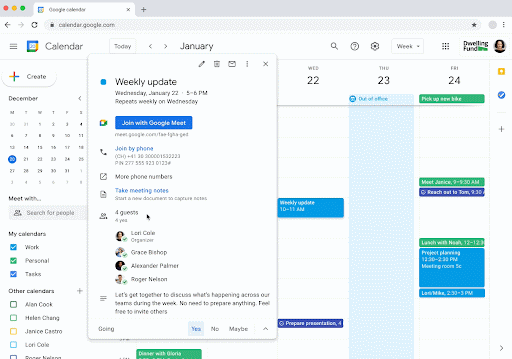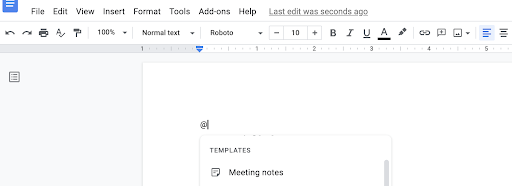Many people are eager to live more sustainably and help address one of our generation’s most profound challenges: climate change. At Nest, we believe taking small, simple actions every day is a great way to start. Homes are some of the largest consumers of energy in the U.S., and over the past decade, Nest thermostats have helped people save over 80 billion kWh of energy at home — enough to power 23 million electric cars for a year.
But we know people want to do even more at home to help our planet. The problem is that it can be hard to know where to start and whether you’re making a real difference.
That’s why today we’re announcing Nest Renew — a service for your Nest thermostat that makes it easy to support a clean energy future, right from home.
Support clean energy with your Nest thermostat
Nest thermostats have always helped you heat and cool your home more efficiently, while also keeping you comfortable. They can now do even more with a Nest Renew feature called Energy Shift.
The electricity that powers our homes comes from different energy sources that vary based on the time of day — often a mix of clean energy (like solar and wind farms) and not-so-clean, fossil fuel-based energy (like gas and coal). Energy Shift works with your thermostat to help you automatically shift your heating and cooling electricity usage to times when your grid is cleaner, without sacrificing comfort. It can also adjust your thermostat’s schedule to run even more efficiently in both summer and winter.
Some electricity providers have time-of-use rates, where costs vary by time of day. If you’re on a plan like that, Energy Shift can help you save by automatically shifting usage to less expensive energy times.
We make these shifts while maintaining the comfort in your home — but you always have the ability to adjust your thermostat directly.
See your impact and your power
Nest Renew comes with monthly impact reports, so you can track the difference you and the Nest Renew community are making. It also shows you when the electricity coming into your home is cleaner and when it’s not so clean throughout the day, so you can make more informed choices — like running the washing machine a little earlier or later, when your grid is cleaner.

And you can extend your impact by earning Renew Leafs and putting them to work through Nest Renew’s Energy Impact Program. The Leaf icon on your Nest thermostat has always shown you you’re saving energy. Now you have more ways to earn Leafs — like when you use Energy Shift or commit to a monthly challenge, such as running your laundry on cold to save energy.
When you’ve earned enough Leafs to reach a milestone, the Energy Impact Program will let you vote to direct Nest Renew funds to your choice of nonprofits from our list of partners across the U.S., like GRID Alternatives and Elevate. These can range from supporting clean energy career training to expanding access to clean energy options like rooftop or community solar projects in communities around the country.
As the U.S. transitions to a carbon-free grid, these types of projects are important to building the new energy economy in a just and equitable way. And our partners are on the ground bringing the benefits of clean energy to low-income, underserved and communities of color across the country.
Support the growth of clean energy
With Nest Renew, you can make better use of the clean energy that’s on the grid today. But we also want to support the growth of clean energy.
Since 2010, Google has signed agreements to buy power from more than 50 renewable energy projects, helping bring more than 5.5 gigawatts of new wind and solar energy to grids around the world — about the same as a million solar rooftops. Nest Renew Premium builds on Google’s leadership and allows you to support the growth of clean energy right from your home.
For $10 a month, Renew Premium unlocks Clean Energy Match. This feature will match your estimated fossil fuel electricity use at home with renewable energy credits (RECs) from U.S. solar and wind plants. Initially, these will come from the Bethel Wind project in Castro County, TX, and in 2023, will also come from the future Roseland Solar project in Falls County, TX. Both of these projects will also provide renewable energy for Google. And these are just the first examples — we’ll add additional solar and wind projects over time.
With Clean Energy Match, you can have confidence that every time you use electricity in your home — whether it’s turning on the lights, running the laundry or watching TV — it’s supporting clean energy sources.
As more people join, we can collectively support more clean energy production on the grid. You can learn more about Clean Energy Match in this deep dive.
Strength in numbers
Since 2013, we’ve partnered with the energy industry to help customers earn rewards and help utility providers better manage local grids. And to truly address climate change, we need to work with energy providers across the U.S. that are committed to a more dynamic, smarter grid — by helping to build a smarter home. Learn more about our partners.
And Nest Renew complements the electric service you receive from your utility provider, so there’s no need to make any changes to your service.
What’s next
Renew Basic will be available for free across the continental U.S., and Renew Premium will be available for $10 per month in select U.S. markets and expanding over time. You’ll be able to use Nest Renew if you have a 3rd generation Nest Learning Thermostat, the Nest Thermostat E or the newest Nest Thermostat connected to a Google account. Nest Renew begins rolling out in early preview by invitation in the coming weeks. Sign up at nestrenew.google.com to join the waitlist.
Together, we can support a clean energy future. Because when we each do a little, it adds up to a lot.










